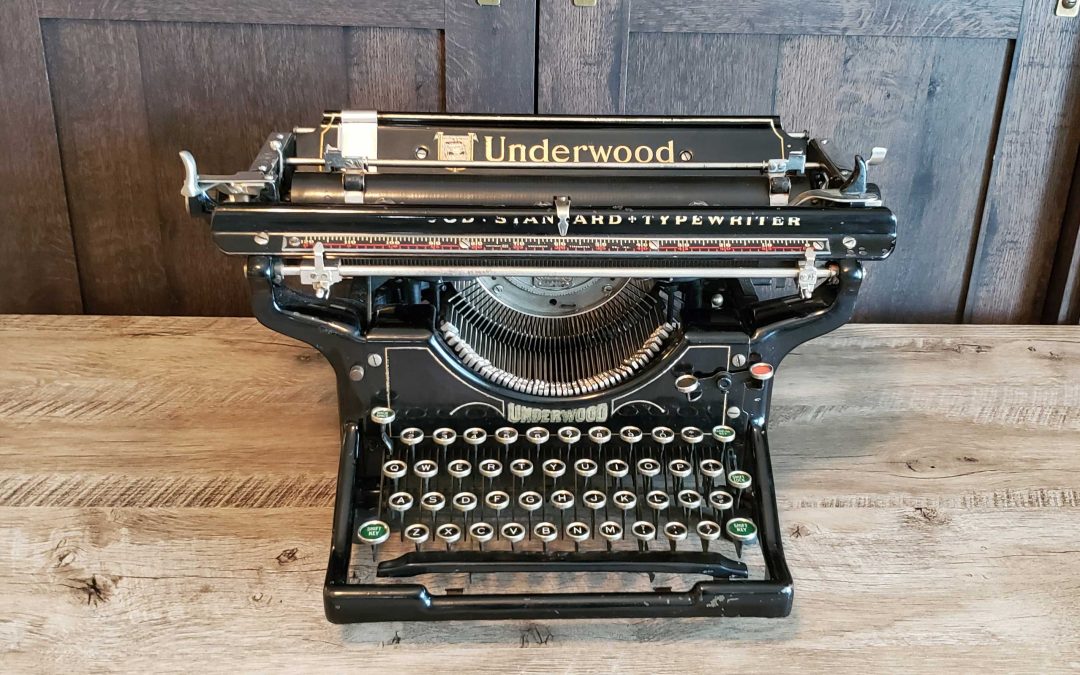(Image courtesy of Patti Klinge)
Apr 2023
Cover Story
Just Your Type
Typewriters find second life as beloved antiques
by Corbin Crable
Hear that clickety-clack as the keys pound away. Feel the smooth keys under your fingers as they fly across the keyboard. Marvel at another line of text created.
From offices to homes, they revolutionized how we work, document, tell stories and communicate. Without them, we wouldn’t have computers and other technologies. And they can easily be found for sale in antique stores. One beloved celebrity even has an extensive collection of them. The typewriter – an invention we all use and likely take for granted.
Have a ball
The precursor to the modern typewriter looked like a pincushion. Called a “writing ball” and invented in 1865, it featured 52 keys arranged atop a large brass cylinder (later, a hemisphere), according to Xavier University. Though initially popular in Europe, it wasn’t exactly universally loved – German philosopher and poet Friedrich Nietzsche received a writing ball for his birthday and “hated it,” according to Richard Polt, author of “The Typewriter Revolution” and creator of The Classic Typewriter Page, a blog on the history of typewriters (Felt’s blog also includes articles on the parts, care, and collecting of antique typewriters).
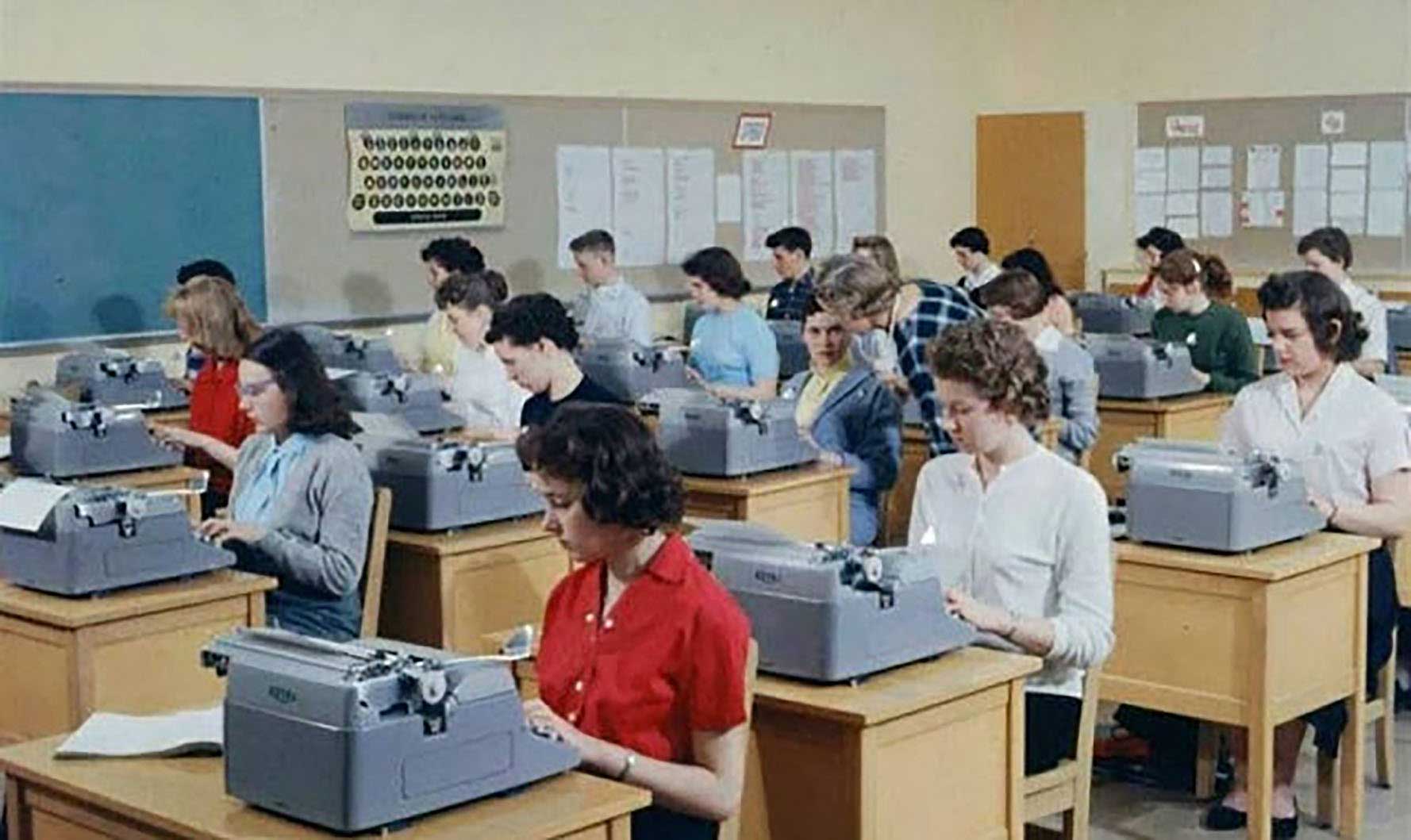
Keyboarding classes were offered at most public schools
Keyboarding classes were offered at most public schools in the U.S. throughout the mid-20th century. (Image courtesy of Vintage News Daily)
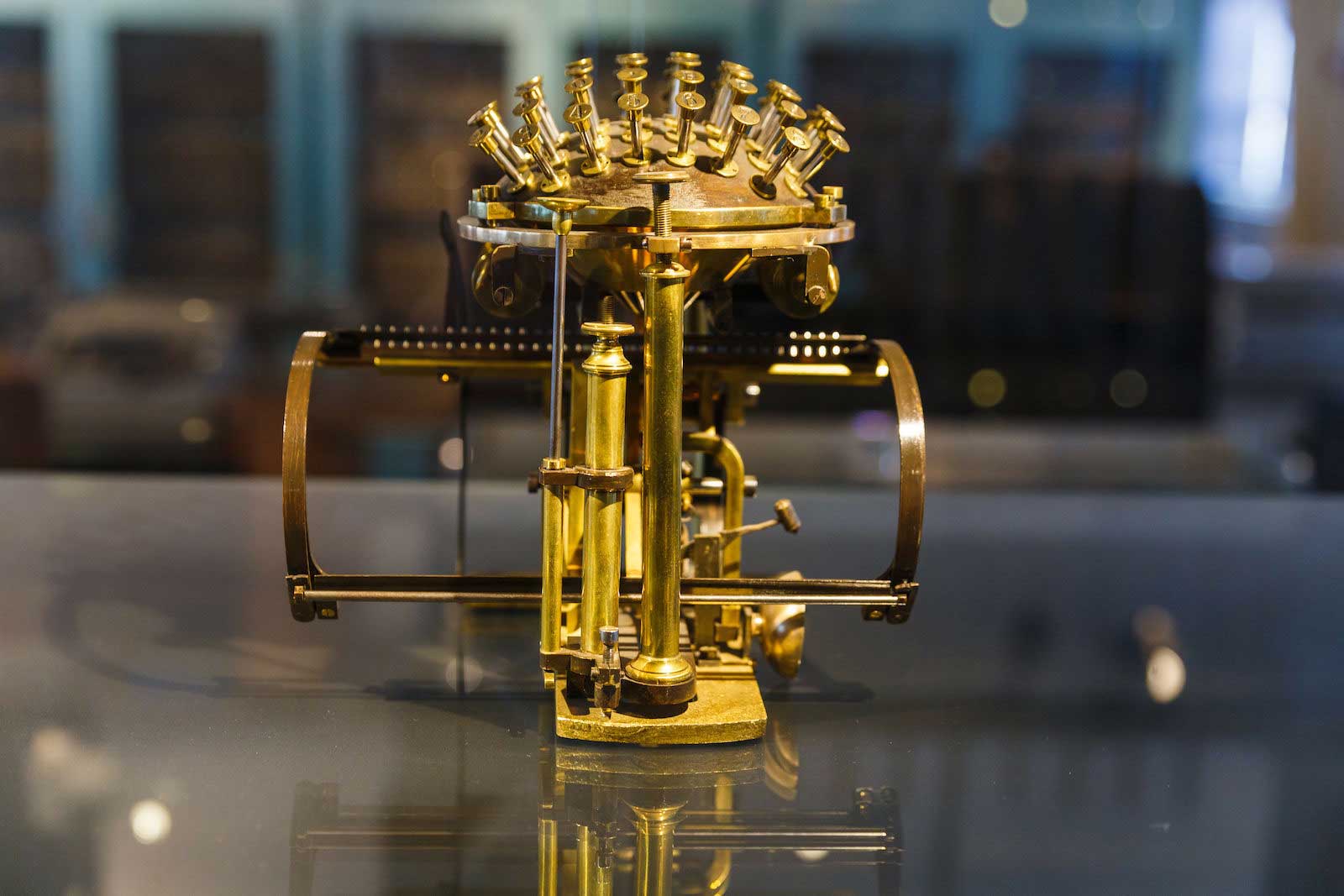
Malling-Hansen writing ball
German philosopher Friedrich Nietzsche typed an estimated 60 documents on his Malling-Hansen writing ball. (Image courtesy of Pinterest)
For the next decade, the writing ball went through some renovations, and the typewriter as we know it today was released for sale to the public in 1874; the QWERTY keyboard layout was invented specifically for typewriters as well. The layout, a reference to the first six keys on the top-left row of the keyboard, was developed by a Wisconsin newspaper editor, Christopher Sholes. The layout was sold to E. Remington & Sons (yes, the gun manufacturer), which manufactured the Sholes & Glidden, first commercial typewriter.
“The Sholes & Glidden, like many early typewriters, is an understroke or “blind” writer: the typebars are arranged in a circular basket under the platen (the printing surface) and type on the bottom of the platen,” Polt explains. “This means that the typist (confusingly called a “typewriter” herself in the early days) has to lift up the carriage to see her work. Another example of an understroke typebar machine is the Caligraph of 1880, the second typewriter to appear on the American market.”
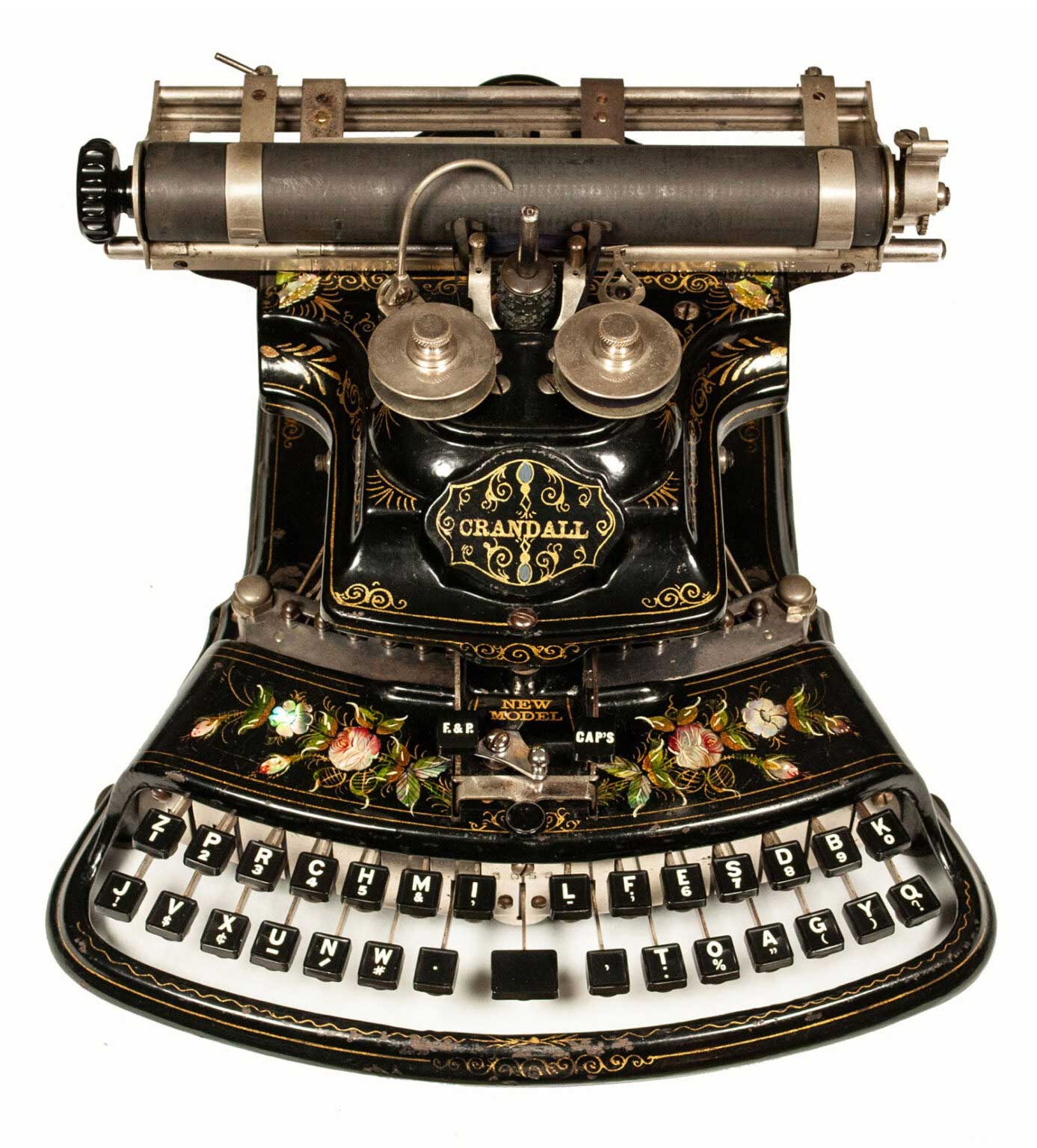
A Crandall New Model typewriter from 1887
A Crandall New Model typewriter from 1887. “This three-bank machine with straight keyboard and a type cylinder located directly in front of the platen, with six rows of letters, is supposed to have been produced in fairly large quantities,” typewriter historian and collector Richard Polt writes. (Image courtesy of The National Museum of American History)
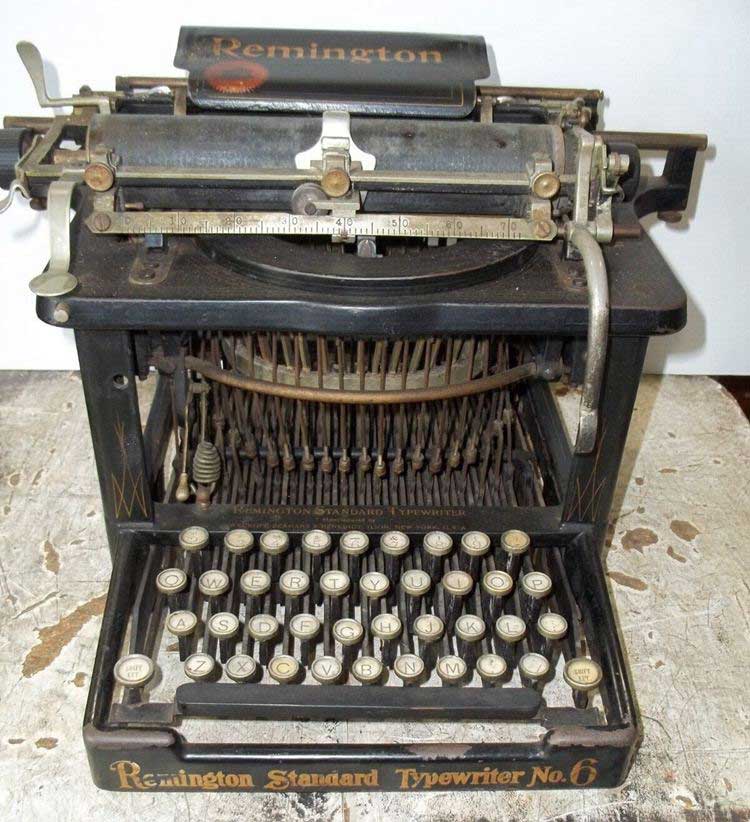
The 1895 Remington Standard Typewriter No. 6
The 1895 Remington Standard Typewriter No. 6, “is lovely, helpful, and exudes vintage typewriter-style wherever it goes. In addition, it serves as a symbol of progress,” according to jacquelinestallone.com.
(Image courtesy of Pinterest)
Say hello to the Underwood
One of the more common typewriters that collectors may find in antique stores is the Underwood, Polt says.
“With the Underwood of 1895, this style of typewriter began to gain ascendancy. The most popular model of early Underwoods, the #5, was produced by the millions,” according to Polt. “By the 1920s, virtually all typewriters were ‘look-alikes’: frontstroke, QWERTY, typebar machines printing through a ribbon, using one shift key and four banks of keys. (Some diehards lingered on. The huge Burroughs Moon-Hopkins typewriter and accounting machine was a blind writer that was manufactured, amazingly enough, until the late 1940s).”
Most mass-produced typewriter models at that time sold for about $100, or much more than the value of a 21st-century computer, when adjusted for inflation.
Another early kind of typewriter – though not nearly as popular as the Sholes & Glidden – was the index typewriter, which entered the market in the early 1880s, just a few years after the Sholes & Glidden. Using a pointer or stylus to choose a letter from an index, then printed by pressing down on a lever, the index typewriter was only popular among those who only occasionally needed to produce typed correspondence. They were cost-effective, too, sold for 1/40th the cost of a Remington. But as keyboard typewriters became more popular, the index typewriter faded into obscurity.
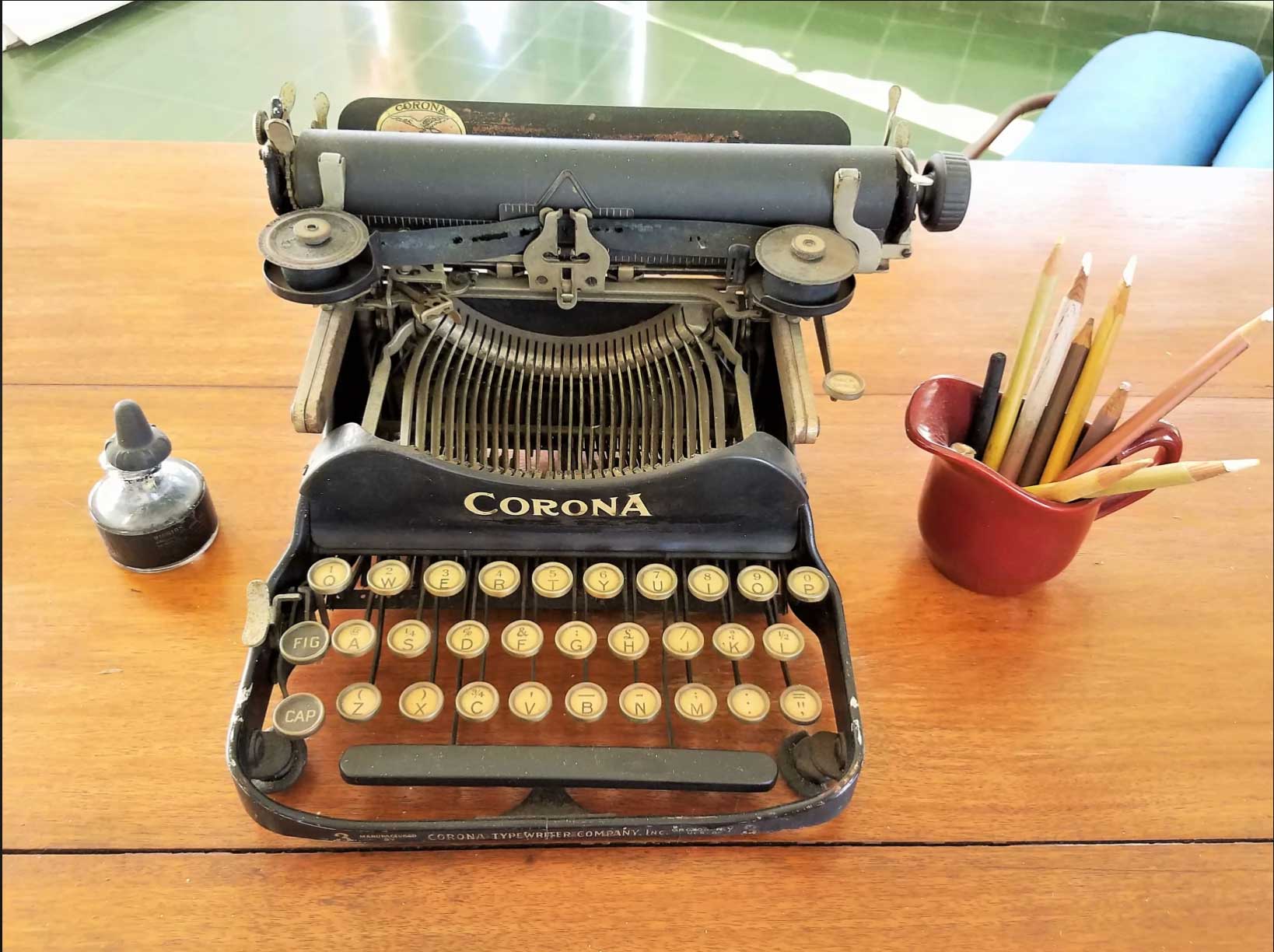
Corona #3
Corona #3 typewriter Ernest Hemingway received as a gift on his 22nd birthday in 1921. (Image courtesy of salsaworldtraver.com)
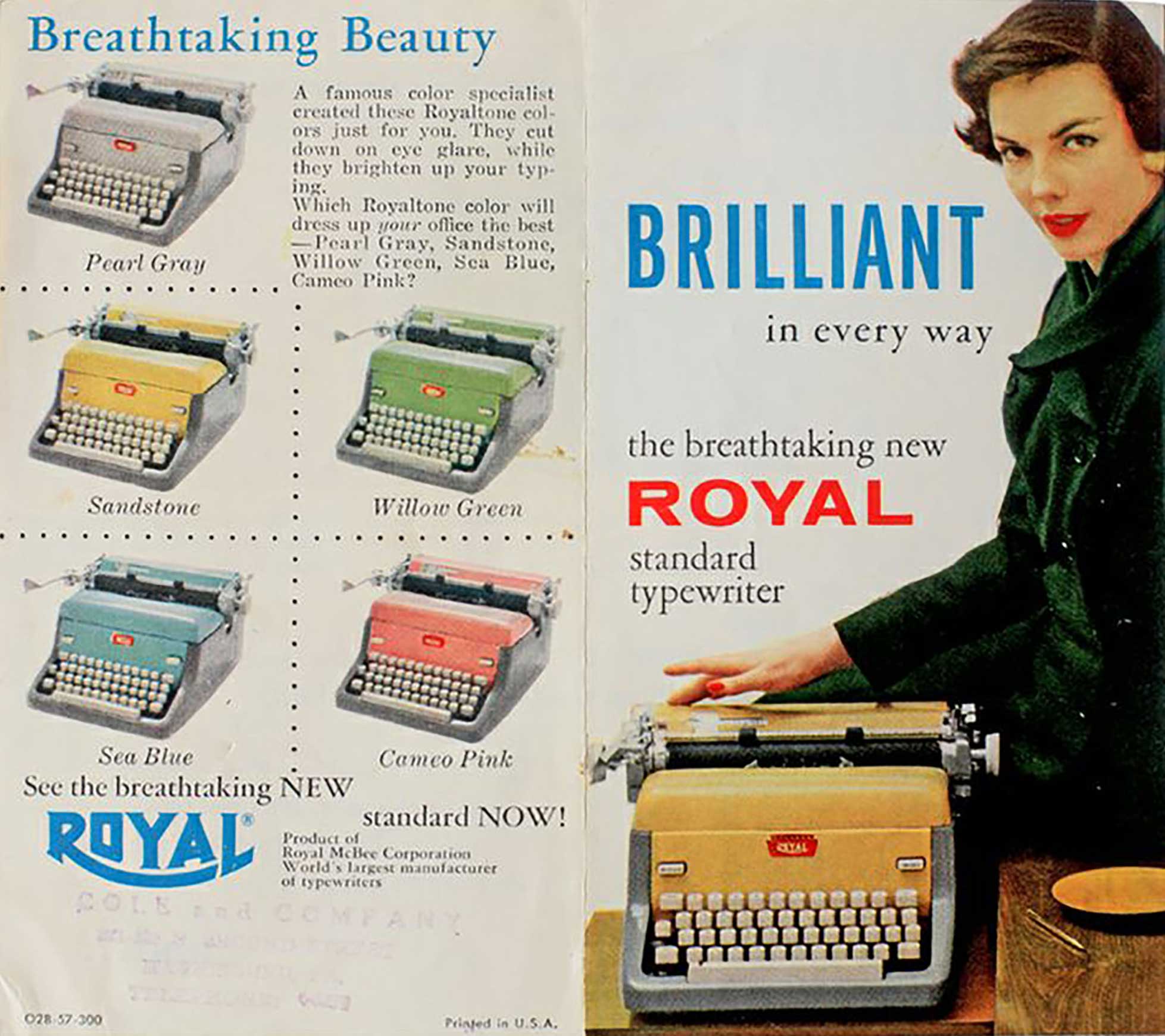
Royal standard typewriter
A 1956 print ad for the Royal standard typewriter, which was released in a variety of colors. (Image courtesy of Pinterest)
That’s how they roll
By the early 20th century, the standard design of the typewriter’s platen, or roller, was mounted horizontally on a carriage that moved to the left after the operator typed each character. On the left was the carriage-return lever, pressed to the right to bring the carriage back to its starting position. The platen would then rotate and the paper would advance. While typing, the typebars would strike upward against the paper, according to author Martin Lyons and Rita Marquilhaus’ 2017 book “Approaches to the History of Written Culture: A Word Inscribed.”
Generations after Thomas Edison’s invention of the Universal Stock Ticker, the precursor to the electric typewriter that remotely printed letters on a thin stream of paper based on a typewriter at the other end of a telegraph line, a Kansas City man invented the first power-operated typewriter in 1914. The man, James Field Smathers, turned over his invention to the Northeast Electric Co. to refine it. When Northeast Electric was purchased by Delco Electronics Corp. in the late 1920s, the resulting company was then bought by IBM, which launched its own electric typewriter, building on Smathers’ invention over the next three decades.
IBM’s Selectric Typewriter, which made its debut in 1961, introduced a small metal “typeball” with reverse-image letters that, thanks to a motor and intricate system of pulleys and latches, rotated the ball into position and struck it against the ribbon and platen, according to the 2020 article “A Different Type of Dance Move” on the IBM website’s official blog. Many of the electronic typewriters of later decades replaced the typeball with a daisy wheel made of metal or plastic.
Electronic typewriters flooded offices and clerical staff members’ desks until the early 1990s. In 1991, the year the Soviet Union fell, so too did IBM’s typewriter division, sold off to Lexmark.
And, here in the 21st century, though the typewriter is more commonly found in antique stores, some of its components – most notably, the keyboard and its layout – remain a critical part of the devices we now use, from computers to cell phones.
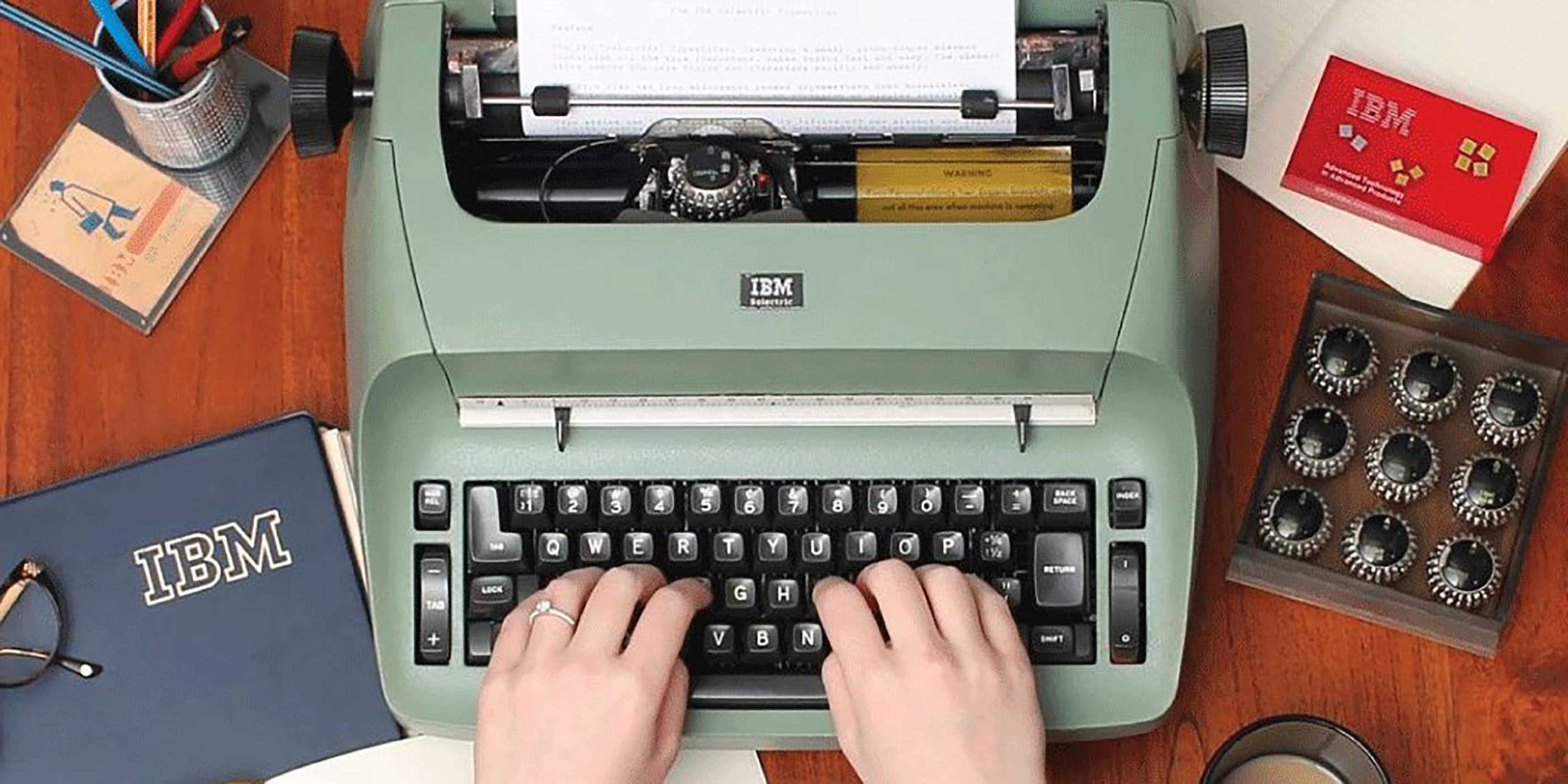
IBM’s Selecric electric typewriter in 1961
The introduction of IBM’s Selecric electric typewriter in 1961 changed the industry forever. (Image courtesy of Twitter)
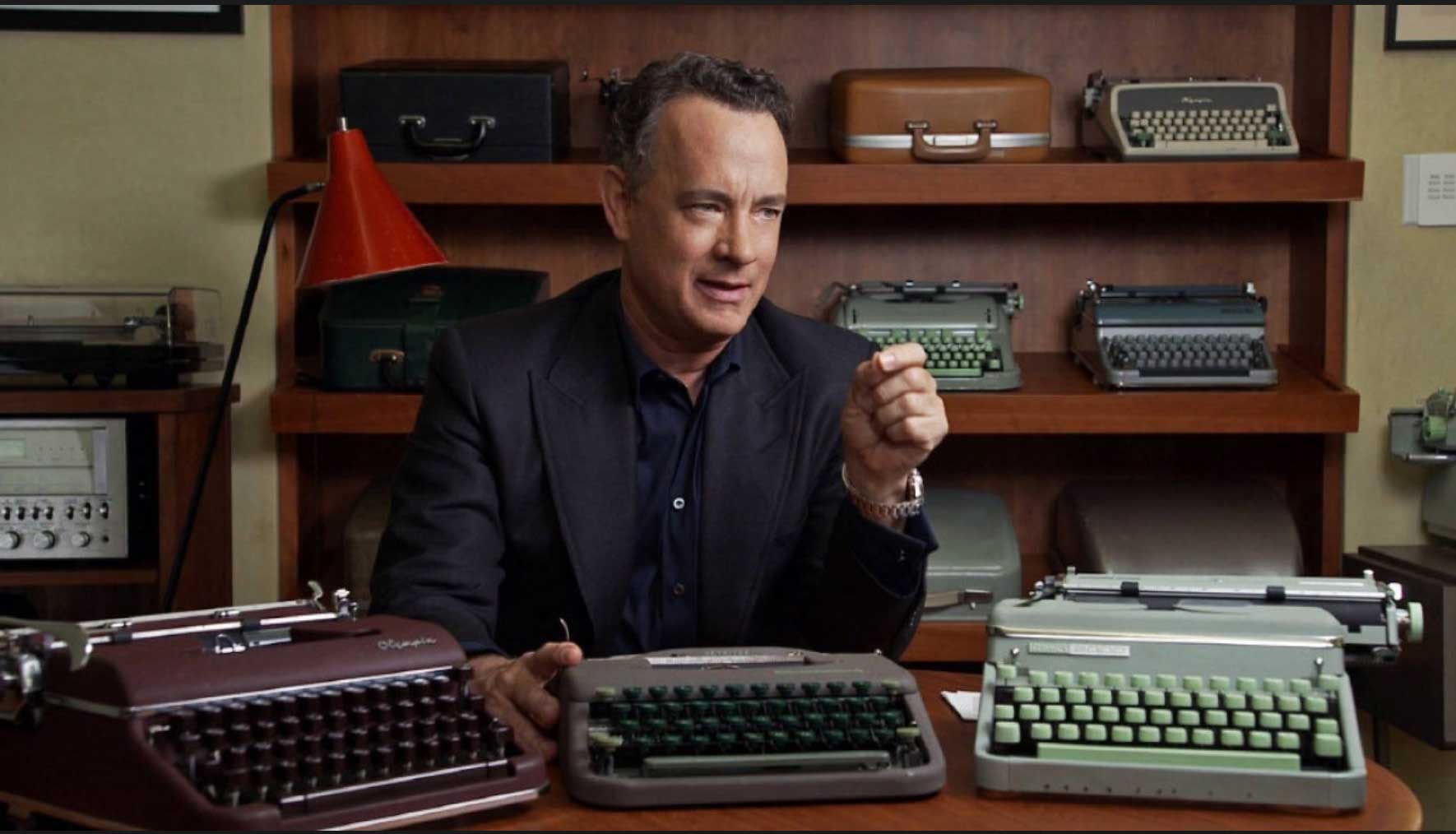
Typewriter Collection of Tom Hanks
Actor Tom Hanks poses with a few of the hundreds of the typewriters in his collection. (Image courtesy of Getty)
Engineered to take a beating
Those who appreciate and collect typewriters are numerous, and they even include celebrities like singer and actress Lady Gaga; she wrote her 2016 song “Perfect Illusion” on an Olivetti Littera 32, the first of which was introduced in 1963.
The most prominent celebrity typewriter collector, however, is actor Tom Hanks. The first typewriter in his now-expansive collection was a Hermes 2000. Hanks has been collecting typewriters since the age of 19.
Hanks, in a 2013 column published in The New York Times, sang the praises of the typewriter, both a tool of beauty and a carefully crafted machine designed to outlast the technologies that replaced it in the world’s offices, homes, and studies.
“There is no reason to own hundreds of old typewriters other than the sin of misguided avarice (guilty!). Most can be had for 50 bucks unless, say, Hemingway or Woody Allen typed on them,” Hanks writes. “Just one will last generations — if it is cleaned and oiled every once in a while. The ribbons are easy to find on eBay. Even some typewriters made as late as the 1970s can be passed on to your grandkids or encased in the garage until the next millennium when an archaeologist could dig them up, hose them down and dip them in oil. A ribbon can be re-inked in the year 3013 and a typed letter could be sent off that very day, provided the typewriter hasn’t outlived the production of paper.”
Hanks’ sweeping, exquisitely-written love letter to typewriters makes no secret of his affinity for those communication tools of yesteryear as lions of longevity.
“The machine, too, may last as long as the rocks of Stonehenge. Typewriters are dense things made of steel and were engineered to take a beating, which they do,” Hanks continues. “My dad’s Underwood, bought used just after the war for his single year at U.S.C., had some keys so worn out by his punishing fingers that they were misshapen and blank. The S key was a mere nib. I sent it to a shop for what was meant to be only a cleaning, but it came back with all the keys replaced. So long, Dad, and curse you, industrious typewriter serviceperson.”


